Specimen Article
This 'Specimen article' shows the enormous wealth of information a Thesaurus article offers – this goes far beyond the mere 'meaning' of a word (please click on the red marked fields). The specimen article can also be downloaded as a PDF in English, French, Italian, Spanish and German.
An extensive introduction can be found under Article structure. Very useful information offer the Praemonenda.
Why the dictionary does not offer word translations you can read in this (German) PDF article, why it is written in Latin we explain in this PDF (also in German).
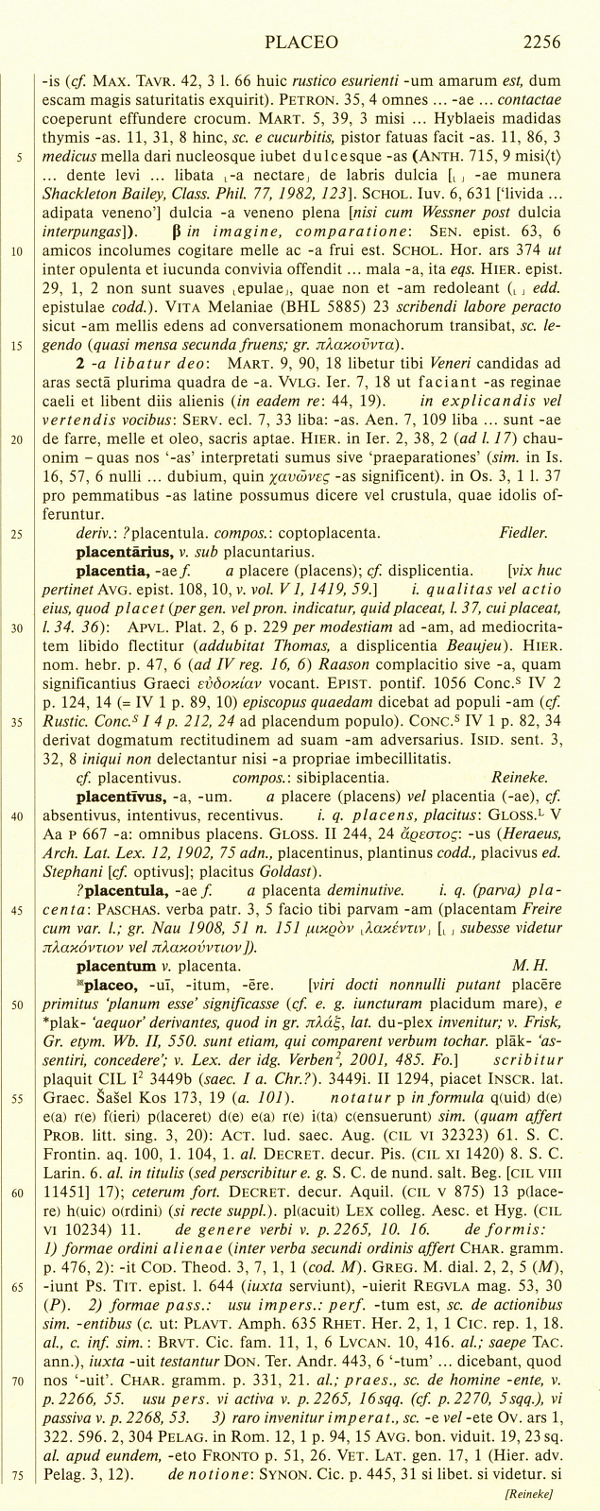
Derivatives and compounds are listed at the end of each article.
Derivatives and compounds are listed at the end of each article.
Individual articles are signed by the author.
Textual notes on individual passages.
The headword is generally given in its basic forms, with indications of the prosody (short vowels remain unmarked). This is followed by the etymology, provided when necessary by an external Indo-Europeanist.
Textual notes on individual passages.
An asterisk before the headword means that the article does not quote all the collected instances; an al. (alia) shows, where further instances have been omitted.
The headword is generally given in its basic forms, with indications of the prosody (short vowels remain unmarked). This is followed by the etymology, provided when necessary by an external Indo-Europeanist.
Before the word and its meanings are described, the so- called 'head' of the article gathers together information about the spelling, abbreviations, forms, etc., as well as ancient comments on the meaning.
Before the word and its meanings are described, the so- called 'head' of the article gathers together information about the spelling, abbreviations, forms, etc., as well as ancient comments on the meaning.
An asterisk before the headword means that the article does not quote all the collected instances; an al. (alia) shows, where further instances have been omitted.
An asterisk before the headword means that the article does not quote all the collected instances; an al. (alia) shows, where further instances have been omitted.
Before the word and its meanings are described, the so- called 'head' of the article gathers together information about the spelling, abbreviations, forms, etc., as well as ancient comments on the meaning.
Before the word and its meanings are described, the so- called 'head' of the article gathers together information about the spelling, abbreviations, forms, etc., as well as ancient comments on the meaning.
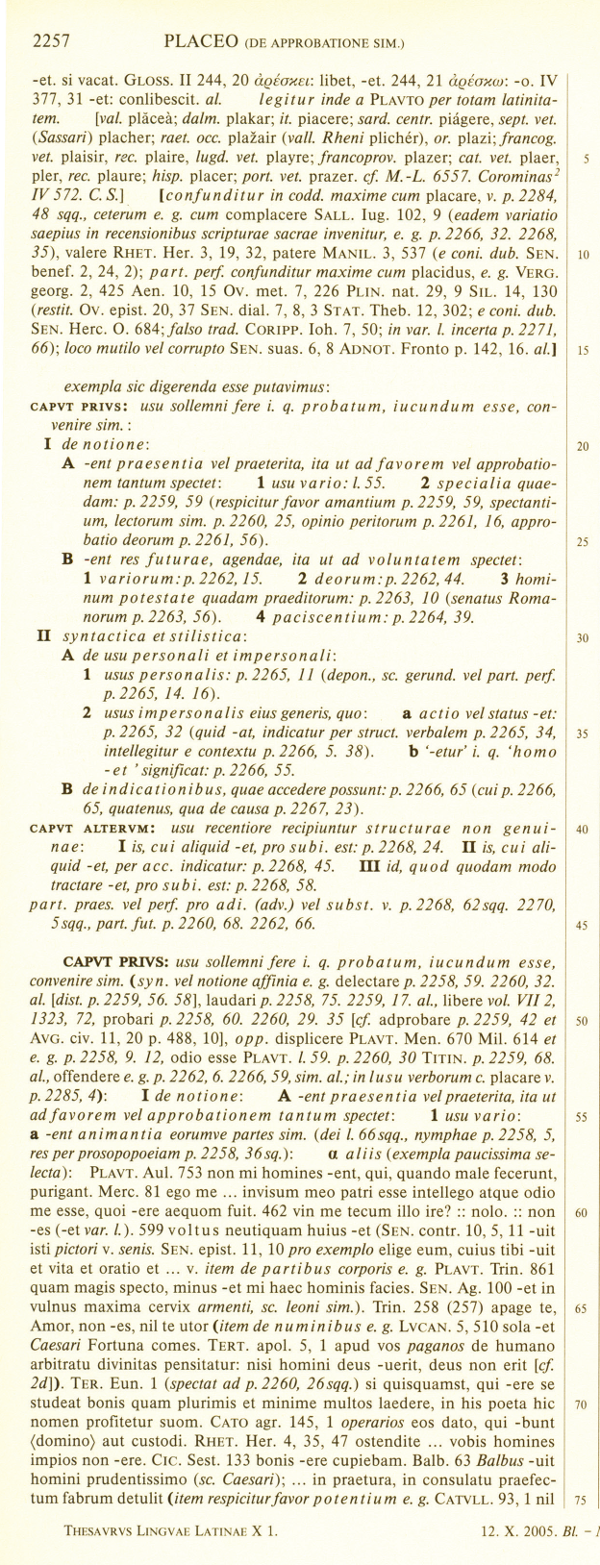
Brief, general information about the distribution of the headword.
Details of survival in the Romance languages, provided by a Romance linguist.
Details of typical errors and corrupt passages in the manuscripts as an aid to textual citicism.
For longer articles, an outline gives an overview of the structure. Insofar as this is both possible and reasonable, the structure follows the principle of dichotomy. Passages are arranged chronologically within groups that are mutually exclusive and presented in a hierarchy.
The Thesaurus does not provide translations; to avoid misunderstandings arising from false analogies with modern languages and to formulate the meanings of words as precisely as possible in accordance with the essence of the Latin language, it uses Latin to describe all linguistic phenomena (which does not exclude the occasional appearance of Greek).
A large number of cross-references by column and line number serve to connect articles and sections.
For very common meanings, often only a few passages are quoted; this is made clear at the beginning of the section.
Later attestations of a recurring combination are usually put in parentheses after the earliest one; brackets are also used to bring together passages linked by subject matter.
At the beginning of each numbered gathering the date of imprimatur and the initials of the editorial team responsible for the fascicle are found.
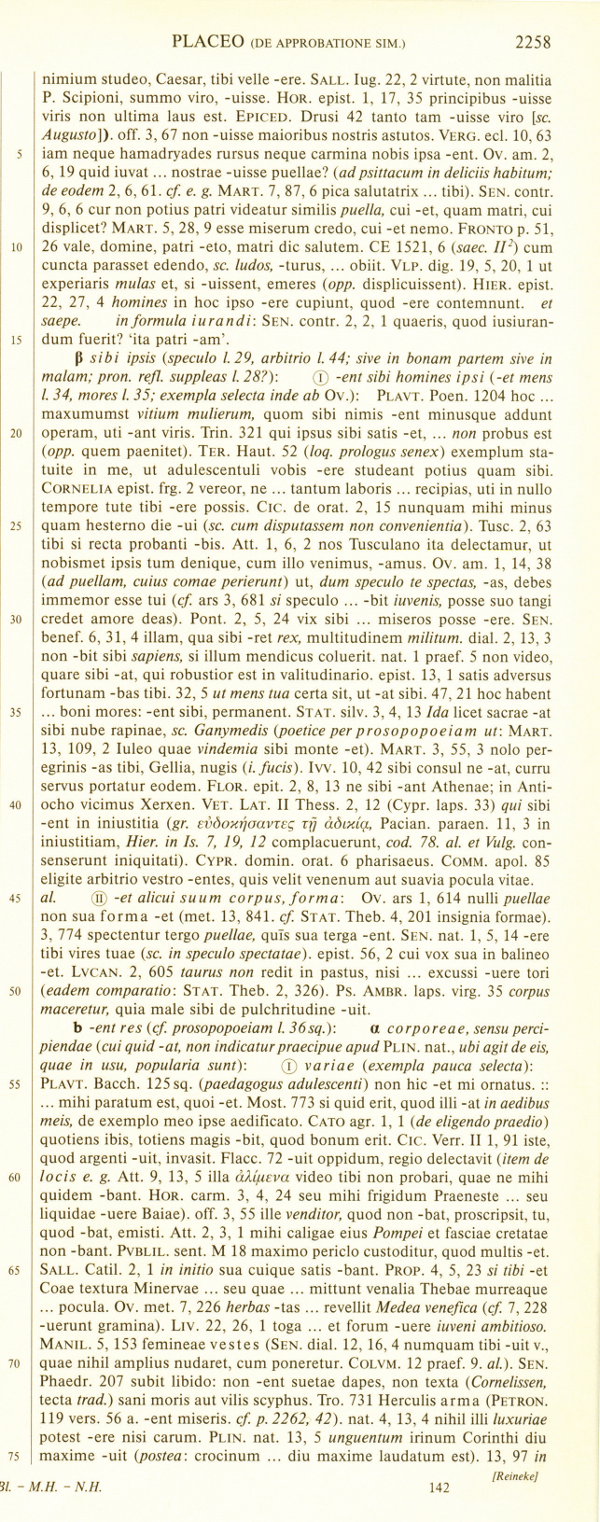
To save space and to draw attention to the headword, it is given in an abbreviated form in the quotations.
The original text of the quotations is printed in roman type; explanations are printed in italics, as are all other editorial additions (headings, remarks about textual matters etc.).
The original text of the quotations is printed in roman type; explanations are printed in italics, as are all other editorial additions (headings, remarks about textual matters etc.).
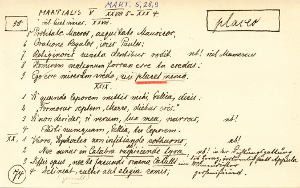
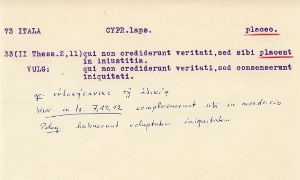
The original of translated texts ia provided, as are parallel versions (a citation is written in italics when it does not contain the headword).
The original of translated texts ia provided, as are parallel versions (a citation is written in italics when it does not contain the headword).
Later attestations of a recurring combination are usually put in parentheses after the earliest one; brackets are also used to bring together passages linked by subject matter.
At the beginning of each numbered gathering the date of imprimatur and the initials of the editorial team responsible for the fascicle are found.
At the beginning of each numbered gathering the date of imprimatur and the initials of the editorial team responsible for the fascicle are found.
